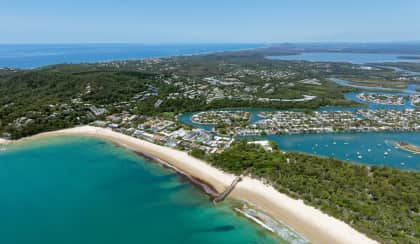Qld values remain resilient through Q2: Report
New findings from the Sunshine State’s peak real estate body suggests Queensland’s property market performed better than most other regions over the June quarter.

Across the three months to June 2023, Queensland’s statewide median house price rose 4.62 per cent, while units climbed 3 per cent during that same window, according to recently released figures from the Real Estate Institute of Queensland (REIQ). By comparison, CoreLogic’s June Home Value Index indicated the national median dwelling increased in value by 2.8 per cent over the equivalent period.
Over the 12 months to June, the state’s house prices grew approximately 5.62 per cent, while unit prices rose 6.91 per cent. Some regional pockets of Queensland are massively outperforming the state’s median year-on-year growth. In Bundaberg, houses are up 15.19 per cent and unit prices have increased 15.45 per cent over the 12 months to June.
Other notable performers include Toowoomba, where house and unit prices are up 10.75 per cent and 12.5 per cent respectively, while the Fraser Coast and Ipswich are also highlighted by the REIQ as strong markets.
REIQ chief executive officer, Antonia Mercorella, believes the state’s price performance highlights the market’s capacity to deliver stable growth, even during a period when prices are expected to head in the opposite direction.
“The dust has settled and we’ve returned to a much more stable sales market,” she said, adding that steady price growth and greater time afforded to buyers means Queensland is a “great market to be in”.
Ms Mercorella noted the trend of unit prices rising at a faster rate than houses is a sign the dwelling type is starting to garner appreciation from buyers.
“It’s unsurprising that buyers are increasingly recognising the value and appeal of apartments, particularly those wanting to get out of the strained rental market and onto the property ladder,” she said.
She explained that in the last few years, the divide between house and unit prices in Brisbane have widened, given the fact that “units present a relative ‘bargain’ entry point and opportunity to live closer to the action”.
In line with the value increases reported across the Sunshine State, the REIQ reports Queensland’s median house price is approximately $650,000, while Brisbane’s median house price has returned below the $1 million mark ($985,000).
Popular coastal tourist destination, Noosa, retained its position as the state’s most expensive housing market with a median house price of approximately $1.3 million. Not only does Noosa have the state’s highest median house price, but it also ranked third for price growth in the June quarter (4 per cent).
On the opposite end of the spectrum, far north Queensland’s Cairns reported the largest house price decline over the three months to June (0.35 per cent), followed by nearby Townsville (0.07 per cent).
On the unit front, buyers can expect to part with around $495,000 on average across the state, while in Brisbane prices for the property type hit a new record median value of $510,000.
Not only can Noosa lay claim to the Sunshine State’s most expensive housing market, the tourist hotspot is also the region where units sell for the highest median price – $1,052,500 – almost double the value of the median unit in the state capital, Brisbane.
Toowoomba led the way for unit markets where prices took the largest backward step over the June quarter, after prices declined 9.21 per cent in the region, followed by Mackay (8.33 per cent) and the Sunshine Coast (3.91 per cent).
Despite Ms Mercorella conceding the state’s market performance is relatively surprising given the impact rapidly rising interest rates have had on Australian real estate, she explained: “Queensland’s market is buoyed by population growth and a lack of listings hitting the market.”
With it being “slim pickings” for buyers wanting to purchase their piece of the Sunshine State, the REIQ CEO stated: “This creates competition and puts upward pressure on prices.”
“Buyers have regained some time, with the typical time to sell a house expanding out to 29 days compared to a year ago, and for units it’s now 25 days, closer to a normal campaign period,” she added.
“The buyer mentality has now swung from fear of missing out to fear of making a mistake, and accordingly we’ve seen the return of conditional contracts again,” she concluded.
